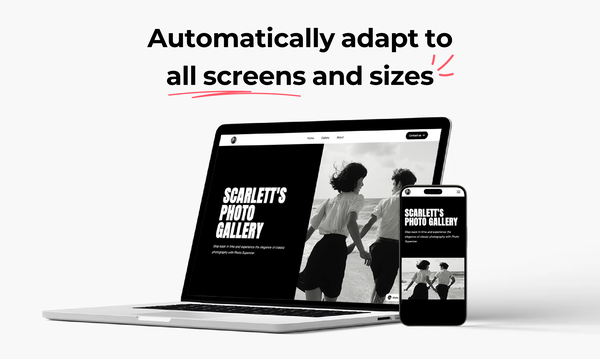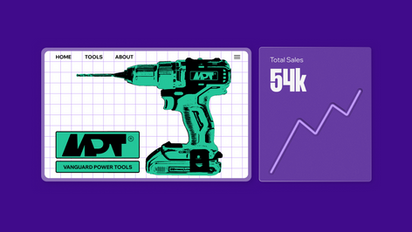What Is No Code Web App Builder?
How to No Code Web App Builder
No Code Web App Builder
In today’s digital age, having a website is essential for any business or individual looking to establish an online presence. Thankfully, there are a variety of platforms available that make building a website easier than ever before. Whether you’re a beginner looking to create a simple personal site or an experienced developer looking to build a complex e-commerce store, there are options for everyone. In this article, we’ll explore some of the best sites for building a website.

A Beginner’s Guide to No Code Web App Builder
No Code Web App Builder
1. WordPress:
WordPress is one of the most popular website building platforms in the world, powering over 30% of all websites on the internet. It’s known for its flexibility and ease of use, making it a great choice for both beginners and experienced developers. With thousands of themes and plugins available, you can customize your site to fit your needs perfectly. WordPress also offers a user-friendly interface that makes it easy to create and manage content.
2. Wix:
Wix is another popular website building platform that offers a drag-and-drop editor, making it easy for anyone to create a professional-looking site. With hundreds of templates to choose from, you can quickly design a site that fits your brand aesthetic. Wix also offers a variety of features, such as e-commerce tools, marketing integrations, and analytics, making it a comprehensive solution for building your online presence.
3. Squarespace:
Squarespace is a website building platform known for its stunning design templates and powerful features. Whether you’re looking to create a portfolio, blog, or e-commerce store, Squarespace has you covered. The platform offers a range of customization options, such as fonts, colors, and layouts, allowing you to create a unique site that reflects your brand. Squarespace also offers built-in SEO tools and analytics, making it easy to optimize your site for search engines.
4. Shopify:
If you’re looking to build an online store, Shopify is the go-to platform for e-commerce websites. With easy-to-use tools for managing products, inventory, and orders, Shopify makes it simple to create a successful online store. The platform also offers a variety of themes and customization options, allowing you to create a unique shopping experience for your customers. Additionally, Shopify offers integrations with popular payment gateways and shipping providers, making it a comprehensive solution for selling products online.
5. Weebly:
Weebly is a user-friendly website building platform that offers a drag-and-drop editor and a variety of pre-designed layout options. Whether you’re looking to create a blog, portfolio, or online store, Weebly has templates and features to support your needs. The platform also offers SEO tools, analytics, and marketing integrations, making it a great choice for building a successful online presence.
1. Start with a unique concept
When developing a new recipe, it is important to start with a unique concept that sets your dish apart from others. Consider combining unexpected flavors, using new cooking techniques, or incorporating unusual ingredients to create a recipe that will pique your readers’ interest. You can draw inspiration from different cuisines, culinary trends, or seasonal ingredients to come up with a concept that is both original and appealing.
2. Experiment with different ingredients and flavors
Building recipes is all about experimentation and creativity. Don’t be afraid to try out new ingredients and flavor combinations to create exciting and delicious dishes. Consider incorporating fresh herbs, spices, citrus zest, or other aromatic ingredients to enhance the flavors of your recipe. Experimenting with different cooking techniques, such as grilling, roasting, or braising, can also add complexity and depth to your dishes.
3. Consider dietary restrictions and preferences
When building recipes for your website, it is important to consider the dietary restrictions and preferences of your audience. Make sure to provide options for different dietary needs, such as vegetarian, gluten-free, dairy-free, or vegan recipes. Including nutritional information, such as calorie count, macronutrients, and allergen information, can also make your recipes more accessible and appealing to a wider audience.
4. Include detailed instructions and tips
When writing out your recipes, be sure to provide detailed instructions that are easy to follow. Include step-by-step directions, cooking times, and temperatures, as well as helpful tips and tricks to ensure success in the kitchen. Consider including photos or videos to visually demonstrate each step of the cooking process, making it easier for your readers to replicate your recipes at home.
5. Test your recipes
Before publishing a new recipe on your website, be sure to test it multiple times to ensure that it is accurate and delicious. Invite friends or family members to sample your dishes and provide feedback on the taste, texture, and presentation. Adjust the seasoning, cooking times, or ingredient ratios as needed to perfect your recipe before sharing it with your audience.
6. Engage with your audience
Building recipes on your website is not just about creating delicious dishes – it is also about engaging with your audience and building a community around your food blog. Encourage your readers to leave comments, ask questions, and share their own experiences with your recipes. Consider hosting cooking demonstrations, virtual cooking classes, or recipe contests to interact with your audience and showcase your culinary skills.

No Code Web App Builder Tips and Tricks
No Code Web App Builder
In conclusion, building a beast-free online store can be a great way to attract eco-conscious consumers and differentiate yourself from the competition. With a range of website builders catering to this growing market, it has never been easier to create a cruelty-free online store. By carefully selecting your products, branding, and marketing efforts, you can build a successful online store that caters to ethical shoppers and helps promote a more sustainable future.

